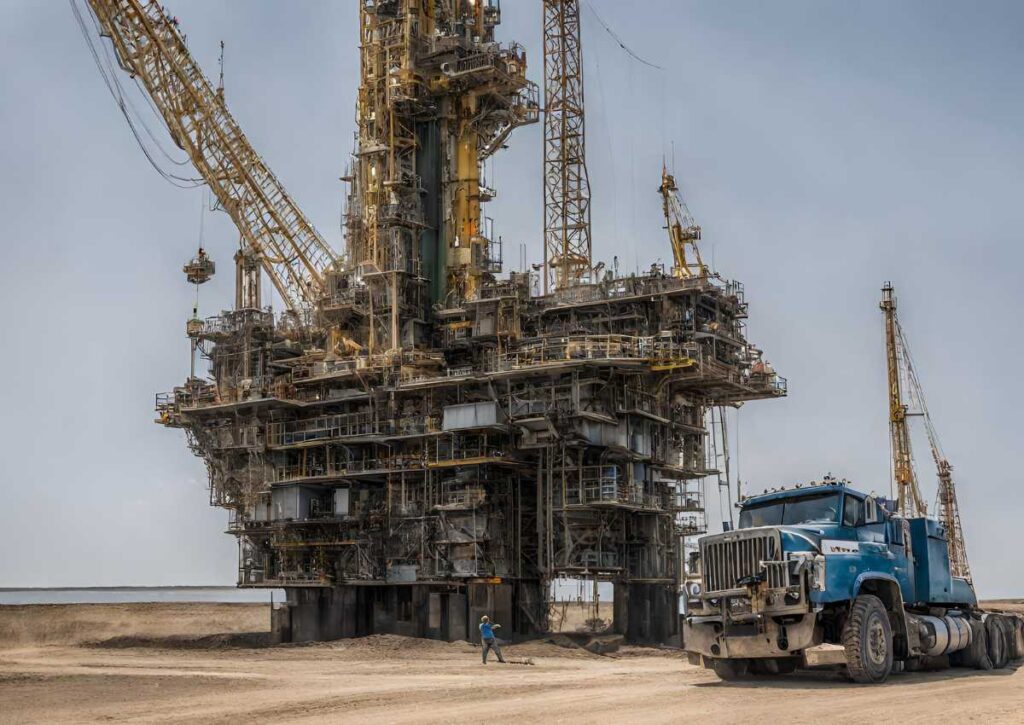A Jack Up Drilling Rig, also known as a self-elevating unit, stands as a crucial player in the dynamic realm of offshore energy exploration.
This mobile platform boasts a buoyant hull equipped with movable legs, enabling it to rise above the sea surface.
The innovative design allows for transportation to desired locations and, once on-site, facilitates the elevation of the hull above the waves with support from the sea bed.
This blog delves into the intricacies of jack up drilling rigs, exploring their history, operational mechanisms, and vital role in the oil and gas industry.
Exploring the Basics
Jackup platforms, shaped either triangular with three legs or square with four legs, find their primary application in exploratory oil and gas drilling and servicing offshore wind farms.
Notably, they are not self-propelled and rely on tugs or heavy-lift ships for transportation.
At the end of 2013, around 540 jack up drilling rigs were operational, highlighting their prevalence in the industry.
The Noble Lloyd Noble, completed in 2016, stands as a testament to engineering marvels, boasting legs towering 214 metres (702 feet) tall.
The Name: Unveiling the “Jacked-Up” Mechanism

The nomenclature “jackup” reflects the rig’s distinctive feature of self-elevation using movable legs.
These legs, numbering three, four, six, or even eight, can be extended or “jacked” above or below the hull.
During transportation, the hull is lowered to the water level, and upon reaching the work site, the crew jacks the legs downward through the water and into the sea floor, anchoring the rig securely.
Historical Footprints

The roots of jackup rigs trace back to the mid-20th century, with early designs such as the DeLong platform and the Scorpion.
These pioneering structures set the stage for the evolution of mobile offshore drilling platforms.
R. G. LeTourneau’s Scorpion, which he designed and launched in 1955, represented a significant advancement in offshore drilling.
Operational Dynamics

A jackup rig, essentially a barge with extendable support legs, is manoeuvred into position with its legs raised and the hull floating on the water.
Upon arrival, the legs are jacked down onto the seafloor, and preloading occurs to secure them in place.
The jacking system then lifts the entire barge above the water to a predetermined height, minimising environmental loading on the hull during operations.
Modern Advancements
Contemporary jacking systems incorporate rack and pinion gear arrangements, driven by hydraulic or electric motors.
This technological sophistication enhances the efficiency and precision of the elevation process.
While jackup rigs are typically deployed in shallow waters, premium or ultra-premium jackups exhibit operational capabilities in depths ranging from 150 to 190 metres (500 to 625 feet).
Conclusion
Jack up drilling rigs play a pivotal role in advancing offshore exploration endeavours.
From their innovative self-elevating mechanism to historical milestones and operational intricacies, these rigs symbolise the resilience and progress of the offshore energy sector.
As technology continues to evolve, jackup rigs remain at the forefront, contributing to the ever-expanding frontier of offshore energy exploration.
FAQs
How does a jackup drilling rig stay stable during operations in the open sea?
An extendable jackup rig’s jacked-down legs, which support it on the seafloor, guarantee its stability.
This anchoring mechanism prevents excessive movement and maintains the rig’s position above the waves.
Are jackup rigs capable of self-propulsion, or do they rely on other vessels for transportation?
Jackup rigs are generally not self-propelled. They rely on tugs or heavy-lift ships for transportation to and from work sites.
The hull, essentially a water-tight barge, is floated on the water during transit.
What is the significance of the term “jackup” in the context of these rigs?
The term “jackup” refers to the rigs’ unique self-elevating mechanism.
The movable legs, usually three, four, six, or eight in number, can be extended or “jacked” above or below the hull, allowing the rig to be raised above the sea surface.
How deep can jackup rigs operate, and are there specialised types for greater water depths?
Jackup rigs are generally suitable for relatively shallow waters, typically less than 120 metres (390 feet).
However, a specialised class known as premium or ultra-premium jackups can operate in water depths ranging from 150 to 190 metres (500 to 625 feet).
Can you provide an example of the tallest jack up drilling rig built and its notable features?
The Noble Lloyd Noble, completed in 2016, holds the record as the tallest jack up drilling rig.
With legs towering 214 metres (702 feet) tall, it showcases the engineering prowess in constructing advanced and high-reaching offshore drilling platforms.
How has the design of jackup rigs evolved since their inception in the mid-20th century?
Early designs, like the DeLong platform and the Scorpion, paved the way for jack up drilling rigs.
Over the years, technological advancements have led to more efficient jacking systems, incorporating rack and pinion gear arrangements driven by hydraulic or electric motors for enhanced precision and reliability.









